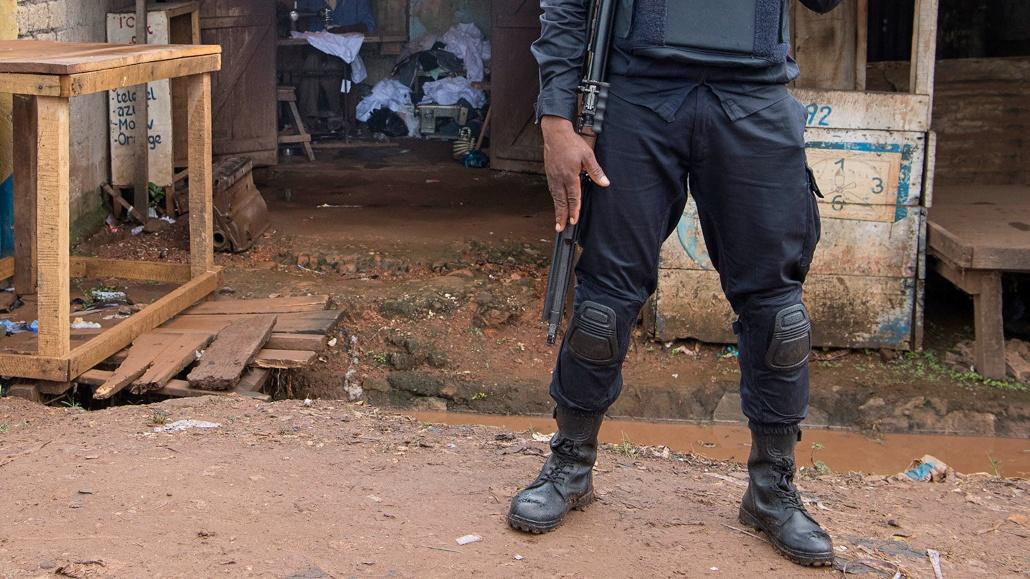Child slavery in West African cocoa farming is frequently reported, but policymakers and NGOs often misunderstand its drivers, fuelled by the cocoa producers who steer the conversation towards issues of poverty. Michael Odijie examines the ongoing scholarship and highlights the importance of addressing cocoa production processes to reduce child slavery in the region.
A week rarely passes without local news outlets reporting on child trafficking to cocoa production areas in West Africa, usually Côte d’Ivoire, which is the world’s biggest producer of cocoa beans (from which chocolate is made). Although COVID-19 may have exacerbated the extent of trafficking to the region, child slavery in cocoa farming is a deep, long-lasting structural problem.
In 2000, a televised documentary helped bring the issue of child slavery in cocoa farming to the world’s attention. The campaign that followed the documentaries, however, which in the United states sought legislation requiring chocolate firms to label their products ‘slave free’, was quelled by promises made by multinational confectionery companies (the main buyers of cocoa beans) to solve the problem within five years (see my research). More than two decades later, their failures are clear. The recent literature on child slavery in the West African cocoa sector, which has largely been produced by nongovernmental organisations (NGOs) and activists, has also failed to properly explain the issue; these authors have failed to engage fully with the history – hence the evolution or phase transition – of cocoa farming in West Africa.
Historically, cocoa production in West Africa has been associated with labour-related problems. For example, following repeated reports of slavery on cocoa plantations in São Tomé and Príncipe in the early 1900s, British and German chocolate manufacturers boycotted cocoa from these regions. Cadbury moved its cocoa-buying business to the Gold Coast (today’s Ghana). In Côte d’Ivoire, earlier problems of labour shortages on cocoa farms in the 1930s/40s led to an immigration policy that encouraged people from neighbouring countries to resettle in cocoa production areas to meet labour needs.
Taking a historical perspective on the changing social relations associated with cocoa production in West Africa will go a long way towards developing a proper understanding of child slavery in the sector today. In failing to take such a perspective, NGOs and activists have inadvertently provided a cover for multinational confectionery companies, which have successfully shifted the public’s focus from ‘child slave labour’ (which led to the outcry in 2000) to ‘child labour’ (which is regarded as less problematic) and created sustainability programmes to ensure their continued supply of cocoa under the guise of combating child trafficking and child labour.
The importance of understanding changes in cocoa farming processes
There are two broad ways of looking at the drivers behind child slavery in the region. The first is to examine neighbouring countries and regions supplying the trafficked children and highlight driving factors such as poverty and desperation, as well as the culture of seeking employment at a young age. This method (which has been adopted by Anti-Slavery International as well as other NGOs) offers some insight, as the regions supplying trafficked children to cocoa farms in Ghana and Côte d’Ivoire today are the poorest in West Africa and have consistently been the main suppliers of such labour. Yet such an explanation is limited.
The second broad approach is to look at changes in cocoa-producing areas. We might examine changes in cocoa prices (as planters tend to turn to cheaper sources of labour when prices fall below a certain point), the cocoa value chain, processes of cocoa farming, and so on. The changes in processes of cocoa farming hold more explanatory power than other factors.
My research suggests the main cause of child trafficking (as well as increased child labour) in cocoa production in West Africa is deforestation, and to tackle the issue cocoa producers should diversify into other products. For an explanation one need only look at the model of the cocoa production cycle in West Africa and consider its implications for labour.
The cocoa production cycle in West Africa has historically involved phases of boom and bust, the full stages of which include: boom, conservation, stagnation, bust and finally a production shift into a new forest area (which accounts for massive deforestation in cocoa production areas) or a different product (diversification). Forestland is the main and decisive factor that causes rotation from one stage to the next, and when forestland has been exhausted, planters tend to diversify into other products that do not usually require forestland, due to the difficulty of continuing production. Any attempt by planters to continue cultivation usually leads to the increased use of labour and increases in production costs without a corresponding increase in output. Calculations have shown that planters sometimes need more than double the amount of labour to continue cultivating cocoa after deforestation.
In places such as Côte d’Ivoire, where migrants are the main source of cocoa labour, there is a double crisis when forestland has been fully used. Although more labour is required to continue production in grassland (or the post-forest environment), less labour is actually available, because the existence of abundant forest is itself a pull factor for migrant labour hoping to find work as cocoa planters. In sum, while deforestation leads to less labour availability, more labour is needed. For example, a planter with six workers finds they only have two workers at the precise moment when they need sixteen workers.
Planters therefore seek to secure cheaper sources of labour. With regional variations, this drives both trafficking and increased child labour, and a direct correlation exists between these cases and deforested regions.
A practical problem this explanation raises is how to deter powerful stakeholders in cocoa cultivation from moving away from policies that drive labour demand. West African governments, chocolate manufacturers, NGOs and even chocolate consumers in developed countries favour cultivation initiatives for areas affected by deforestation and therefore support the continuation of these environments, rather than prevent the forests from being destroyed in the first place; sustainability certification schemes continue to support the conditions for increased labour demand and, therefore, child labour.
Photo: Nestlé, ‘sustainable cocoa’. Licensed under CC BY-NC-ND 2.0.





